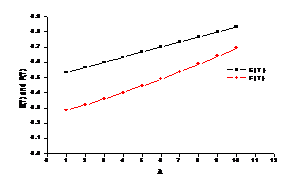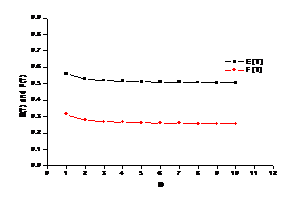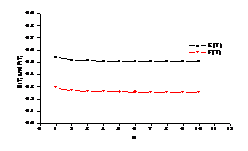 |
||||||||||||||||||||||||||||||||||||||||||||||||||||||||||||||||||||||||||||||||||||||||||||||||||||||||||||||||||||||||||||||||||||||||||||||||||||||||||||||
|
|
Home| Journals | Statistics Online Expert | About Us | Contact Us | |||||||||||||||||||||||||||||||||||||||||||||||||||||||||||||||||||||||||||||||||||||||||||||||||||||||||||||||||||||||||||||||||||||||||||||||||||||||||||||
 |
||||||||||||||||||||||||||||||||||||||||||||||||||||||||||||||||||||||||||||||||||||||||||||||||||||||||||||||||||||||||||||||||||||||||||||||||||||||||||||||
| About this Journal | Table of Contents | ||||||||||||||||||||||||||||||||||||||||||||||||||||||||||||||||||||||||||||||||||||||||||||||||||||||||||||||||||||||||||||||||||||||||||||||||||||||||||||||
|
|
[Abstract] [PDF] [HTML] [Linked References] Determination of Expected Time to Seroconversion When the Antigenic Diversity Threshold Follows Order Statistic R.M.Palanivel, P.Pandiyan and R.Sathiyamoorthi Department of Statistics, Annamalai University, Annamalai Nagar – 608 002 (TN) INDIA. Corresponding Address: Research Article Abstract: In the study of HIV infection and consequent AIDS, the antigenic diversity is an important causative factor. A person, who has sexual contacts with an infected person, acquires more and more of HIV. This accentuates the increase in antigenic diversity of the invading antigen. When the total contribution to antigenic diversity on successive occasions of sexual contact crosses a particular level called the antigenic diversity, the seroconversion occurs. In this paper, the expected time to seroconversion and its variance are obtained under the assumption that the antigenic diversity is a random variable distributed as the nth order statistic. Numerical illustrations have also been provided. Key Words: antigenic diversity thershold; seroconversion; nth order statistic.
Introduction: The determination of the expected time to seroconversion is an important aspect in the study of HIV infection and its spread. When the cumulative antigenic diversity due to newly acquired HIV in successive contacts with an infected crosses a particular level called antigenic diversity threshold, the seroconversion occurs. The interarrival times between successive contacts are also random variables. The antigenic diversity threshold is taken to be random variable, since it differs from one individual to another. The concept of antigenic diversity threshold has been discussed by Nowak and May (1991).Kannan and Sathiyamoorthi (2008) have obtained expected time for the antigenic diversity of an infected individual to cross the threshold assuming that the antigenic diversity threshold is a random variable which follows exponential distribution. Ratchager et.al (2003) have considered a stochastic model for the estimation of expected time to seroconversion using the concept of order statistics. Palanivel et.al (2011) have estimated the expected time and its variance assuming that the antigenic diversity threshold is distributed as the first order statistic. In this paper the same concept is extended to the case when the threshold is distributed as nth order statistic. The shock model and cumulative damage process discussed by Esary et.al (1973) has been used in this model to estimate the expected time to seroconversion.
Assumptions of the model The following are the assumptions used in this model
Notations: Xi = a random variable denoting the contribution to the antigenic diversity, i =1,2… k and has p.d.f g(.) with c.d.f G(.). Y = a random variable denoting the antigenic diversity threshold. It follows the nth order statistic, and has p.d.f h(n)(.) and c.d .f H(n)(.) Ui = a random variable denoting the interarrival times between successive epochs of exposure and has p.d. f (.) and c.d.f F(.). T = a random variable denoting the time to seroconversion with p.d.f l(.) and c.d.f L(.) Fk (.) = k convolution of F(.) Results:
Let Y follows nth order statistic
The probability that in k contacts during (0,t),the total antigenic diversity generated does not exceed the threshold level Y is ,
Where
On simplication L (t) = P [T < t] = 1- S (t) (4) Taking the Laplace trance form of L (t) we have L*(s) and then using the relationship L*(s) = We have Now
(5) On Simplification Then
Assuming that g (.) ~ exp (λ) and f(.) ~ exp (μ)
Now to find E (T2) we have
Now taking the terms T1 ,T2, T3, … Tn we have
From (6) and (7) the expression for V (T) can be obtained.
Conclusions:
Table 1 Fig 1
Table 2 Fig 2
Table 3 Fig 3
Reference |
|||||||||||||||||||||||||||||||||||||||||||||||||||||||||||||||||||||||||||||||||||||||||||||||||||||||||||||||||||||||||||||||||||||||||||||||||||||||||||||
|
||||||||||||||||||||||||||||||||||||||||||||||||||||||||||||||||||||||||||||||||||||||||||||||||||||||||||||||||||||||||||||||||||||||||||||||||||||||||||||||













